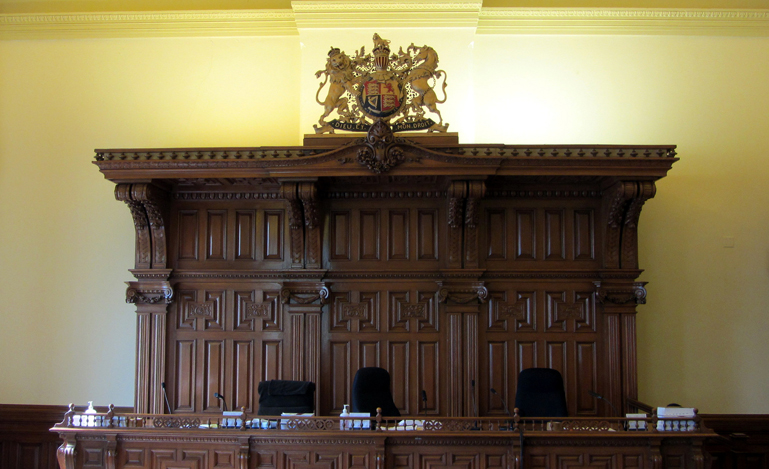Filling judicial vacancies: Only a partial solution
Why staffing the judiciary, however, has been a challenge for the government.

During their first three years in government, the Justin Trudeau-led Liberal Party has managed to stickhandle some significant legal files with relative skill. Medical assistance in dying, the legalization of cannabis, national security reform were all brought forward and passed into law with little of the legal fight that overshadowed much of the agenda of the Harper government before it.
But criticism remains regarding Ottawa’s handling of criminal justice. In particular, a fight is brewing over a justice reform bill that Justice Minister Jody Wilson-Raybould says will tackle court delays. Her critics say it will do the opposite.
The other big-ticket attempt to fix the issue of court delays has been to create new spots on the bench and get them filled in a reasonable time. Staffing the judiciary, however, has been a challenge for the government.
In May, the Conservative justice critic, Michael Cooper, rose in the House of Commons to deliver a particularly blistering attack on the Justice Minister, charging that “she could not get around to doing the simplest and easiest thing, which is to fill judicial vacancies in a timely manner.” The vacancies, critics add, are only exacerbating backlogs, running the risk that ever-more cases will face the delay ceiling set by the Supreme Court in Jordan.
The Canadian Bar Association has taken a more nuanced view on the issue.” Kerry Simmons and Quinn Ross, presidents of the Canadian and Ontario Bar Associations, respectively, wrote to the minister that “maintaining full judicial complements is critically important to ensuring public access to, and confidence in, our justice system.” They cautioned against diverting resources from those benches to the criminal system is not sustainable. Instead, increasing those complements in provinces most at need, and ensuring that the family and civil courts remain adequately staffed and resourced is the most effective way to overcome the issue.
But news headlines can be harsh. In July, a $13-million fraud case was thrown out because there was nobody to hear the case in Toronto.
“Unless all vacancies are filled quickly, we have significant concerns about our court’s ability to keep up,” Norine Nathanson, senior counsel in the office of the chief justice of the Superior Court told the Toronto Star.
Statistics, published by the Office of the Commissioner for Federal Judicial Affairs Canada, also show that vacancies remain a problem. As of August 1, 2018, there are 64 judicial vacancies across the country — about five percent of positions on the bench.
That number has stayed, more or less, steady, fluctuation only slightly, as judges retire or receive promotions to higher courts, and as Ottawa moves to fill those vacancies.
But there’s little doubt the number has gone up in recent years. In March 2016, there were 35 vacancies. That number hit 51 by September 2016 and has remained somewhere north of 50 since the beginning of 2017.
Since taking office, the Trudeau government has appointed 179 judges to the court, while they've elevated 33 judges to higher courts.
Many have suggested, including the Standing Senate Committee on Legal and Constitutional Affairs, that the Trudeau government’s new appointment process is, in part, to blame for those delays. By launching a new one application process for aspiring judges — more “lengthy and onerous” and that focuses on diversity on the bench — it may have discouraged applicants.
But while it’s pretty widely-accepted that judicial vacancies contribute to court delays, the statistics suggest that a single focus on addressing the numbers on the bench is no panacea.
It is worth noting that many of the open spots are largely concentrated in two provinces — Ontario and Alberta. Both provinces have also seen their complement of judges grow in recent years.
What’s more, Ontario and Alberta both rank below the national average for the number of days between a first appearance and a resolution of the charges and for the delay between appearances, according to the 2015/2016 Integrated Criminal Court Survey. The survey found that the median number of days between first appearance and completion of the case sat at 112 in Ontario and 127 in Alberta. Manitoba, which hasn’t struggled with nearly the same level of judicial vacancies, recorded a median wait of 145 days.
Manitoba has no vacancies at its Court of Queen’s Bench, which has a complement of just 22 judges, just over a tenth of those who sit on the Ontario Superior Court. And yet, there was some public concern in April after the court stayed charges against one man facing a slew of harassment and firearms charges after his case was delayed by 22 months. Manitoba, unlike Ontario, Alberta, and Quebec, has not, at least publicly, moved to lobby Ottawa for more spots on the bench.
That was the fifth successful application for stay in Manitoba based on the Supreme Court’s R. v. Jordan. That was out of 76 applications, according to Winnipeg Free Press. Statistical reporting on these applications is spotty, but the available data shows that Manitoba is fairing relatively well compared to the rest of the country. When the Canadian Press put together a six-month snapshot examining the first half of 2017, it found 204 successful applications for stays Canada-wide, but none in Manitoba.
Of course, looking at the criminal delays only tells part of the story. There appears to be a significant diverting of resources from the civil system to the criminal one to avoid the very types of stays that make headlines, and that’s hurting plaintiffs.
David Schell, who practises with Devry Smith Frank LLP, wrote last February that delays are becoming unworkable, judges appear in short supply, and the impact on his clients is noticeable.
“Personal injury claimants are often in dire need of money as they may not be working, they may require ongoing medical treatment or they may require some other form of care that is expensive,” he says. “The financial burdens on these injured parties become even more difficult when they have to wait years for their legal case to come to a conclusion.”
Even recognizing the issue of judicial vacancies, the exhaustive Senate investigation into those delays concluded that, “the lack of robust case and case flow management may be the single biggest contributing factor to court delays.”
Last year, A. Scott Reid, a partner with Edward H. Royale & Partners, advocated for a more “pragmatic approach” to tackling the Jordan ruling. He addressed judicial appointments, but warned that “[m]ore than just judges are required.”
“The government has to invest in courts, courtrooms, clerks, court staff, court reports, cells officers. Remember, judges need chamber days when they write rulings, so other judges need to preside on those days. Courts can run from 8:30am – 5:00pm.”
As CBA National reported earlier this month, time is running out for the Trudeau government to tackle legislative fixes and reforms for the criminal justice system. So far, its approach has been focused on a package of proposals — notably, reforming remand and scrapping preliminary hearings for most cases. Even if these efforts contribute to speeding up cases, many doubt that the impact will be dramatic.
Similarly, it bears asking whether filling judicial vacancies and creating new positions will ultimately be enough.


